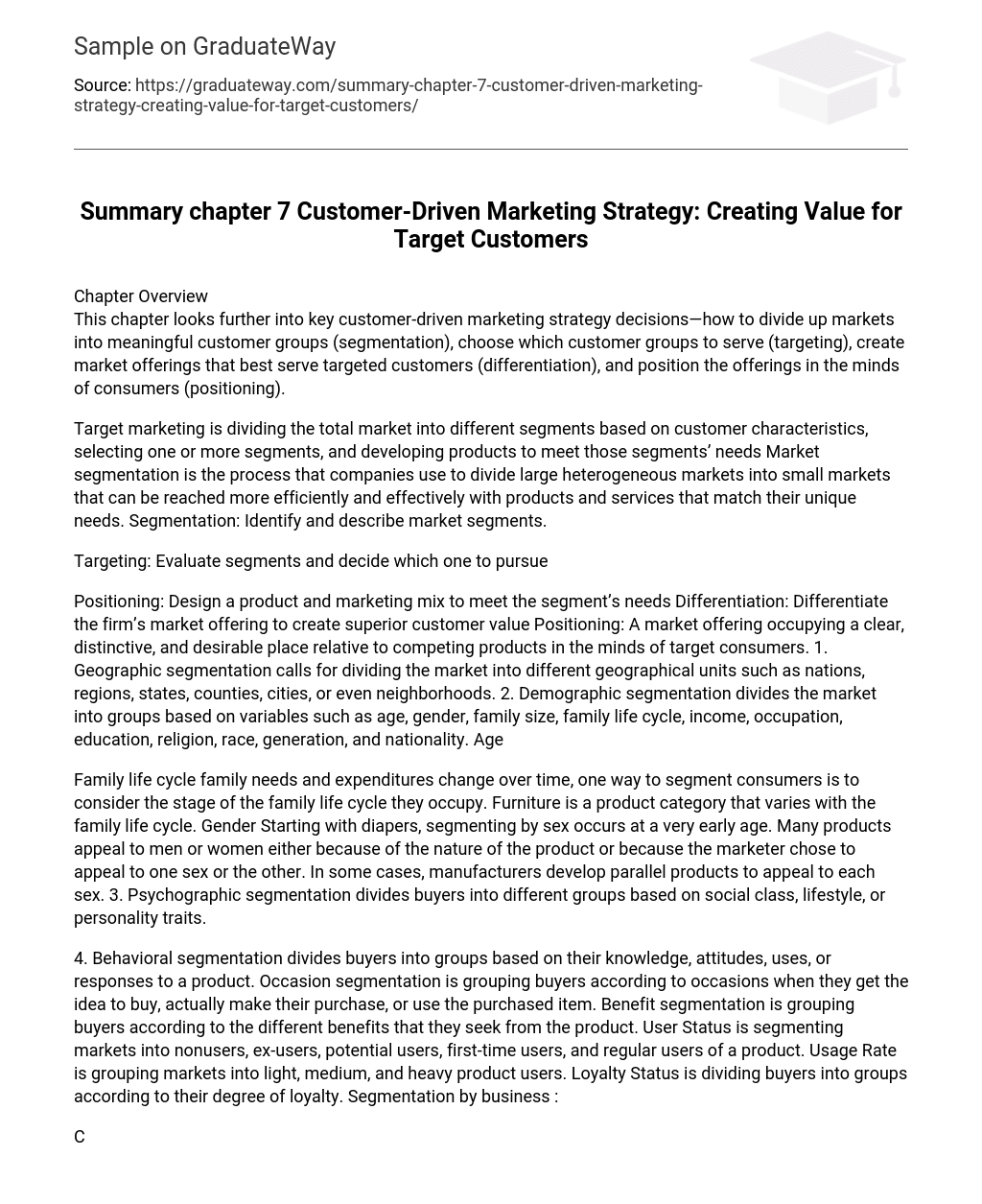This chapter looks further into key customer-driven marketing strategy decisions—how to divide up markets into meaningful customer groups (segmentation), choose which customer groups to serve (targeting), create market offerings that best serve targeted customers (differentiation), and position the offerings in the minds of consumers (positioning).
Target marketing is dividing the total market into different segments based on customer characteristics, selecting one or more segments, and developing products to meet those segments’ needs Market segmentation is the process that companies use to divide large heterogeneous markets into small markets that can be reached more efficiently and effectively with products and services that match their unique needs.
- Segmentation: Identify and describe market segments.
- Targeting: Evaluate segments and decide which one to pursue
- Positioning: Design a product and marketing mix to meet the segment’s needs
- Differentiation: Differentiate the firm’s market offering to create superior customer value
- Positioning: A market offering occupying a clear, distinctive, and desirable place relative to competing products in the minds of target consumers.
Geographic segmentatn calls for dividing the market into different geographical units such as nations, regions, states, counties, cities, or even neighborhoods. Demographic segmentation divides the market into groups based on variables such as age, gender, family size, family life cycle, income, occupation, education, religion, race, generation, and nationality.
Family life cycle family needs and expenditures change over time, one way to segment consumers is to consider the stage of the family life cycle they occupy. Furniture is a product category that varies with the family life cycle. Gender Starting with diapers, segmenting by sex occurs at a very early age. Many products appeal to men or women either because of the nature of the product or because the marketer chose to appeal to one sex or the other. In some cases, manufacturers develop parallel products to appeal to each sex.
Psychographic segmentation divides buyers into different groups based on social class, lifestyle, or personality traits. Behavioral segmentation divides buyers into groups based on their knowledge, attitudes, uses, or responses to a product. Occasion segmentation is grouping buyers according to occasions when they get the idea to buy, actually make their purchase, or use the purchased item.
Benefit segmentation is grouping buyers according to the different benefits that they seek from the product. User Status is segmenting markets into nonusers, ex-users, potential users, first-time users, and regular users of a product. Usage Rate is grouping markets into light, medium, and heavy product users. Loyalty Status is dividing buyers into groups according to their degree of loyalty.





